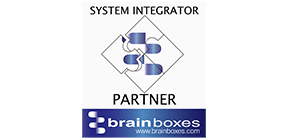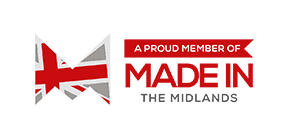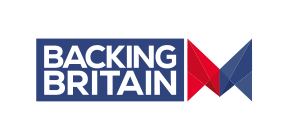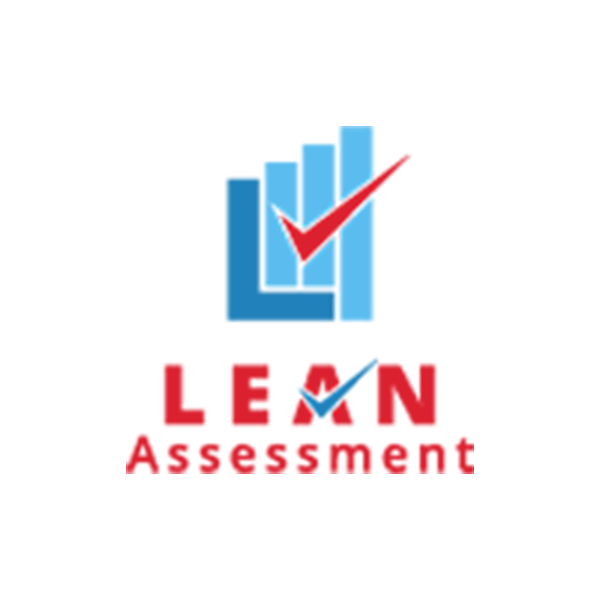Manufacturing Cost Reduction: 10 Best Practices and Tools to Use
- By Brett Griffiths
- Lean Technology
- October 14 , 2025
- Share
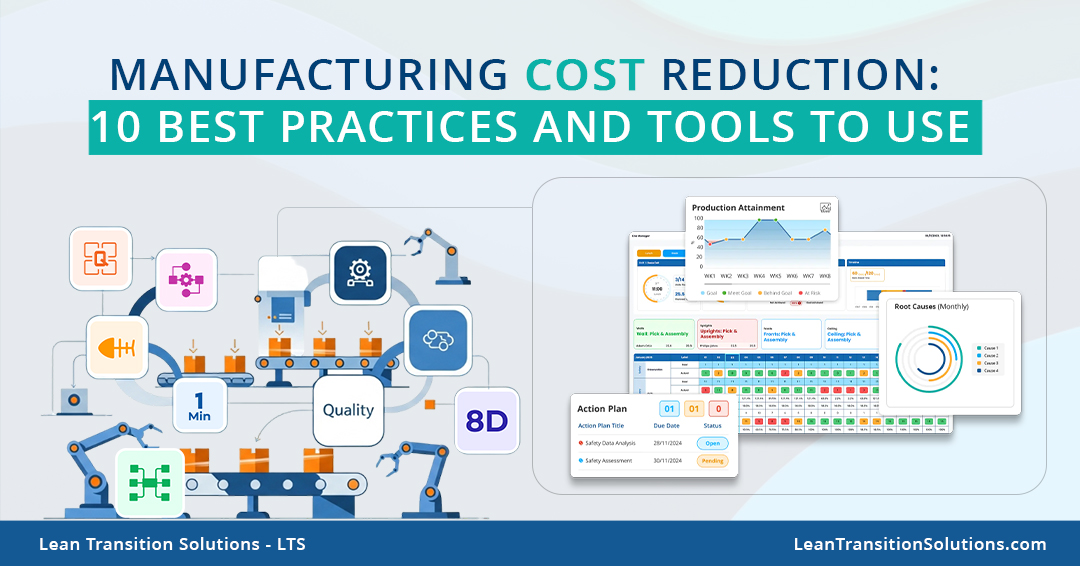
Manufacturing cost reduction isn’t just about cutting expenses; it’s about making smarter choices that improve long-term sustainability and competitiveness.
Why does manufacturing cost reduction matter?
Rising material prices, energy costs, and labour challenges are putting pressure on manufacturers to operate more efficiently. By strategically managing costs, manufacturers can increase margins, improve productivity, and reinvest in innovation. More importantly, effective cost management supports continuous improvement and helps align day-to-day operations with strategic goals.
Cost savings in manufacturing directly impact profitability and help companies remain resilient during economic uncertainty. Whether it’s optimising processes, improving workforce performance, or reducing waste, smart cost cutting strategies play a critical role in staying competitive.
Let's explore simple cost-saving ideas for manufacturing companies by examining the best cost-saving strategies and tools that can bring significant improvements to your shop floor.
10 Proven Manufacturing Cost Reduction Practices for Companies
Cost reduction is most effective when approached as a strategic, continuous improvement effort. Here are ten proven cost reduction strategies used by successful manufacturers worldwide:
1. Lean manufacturing implementation
Lean methodology is more than a toolbox, it's a mindset. The goal is simple: eliminate non-value-added activities and maximise value delivery to the customer. This is achieved by systematically identifying waste, empowering frontline workers, and optimising flow. Adopting Lean principles to eliminate waste (muda) and streamline workflows, helps to create more value with fewer resources. Lean tools like 5S, Value Stream Mapping, and Just-in-Time (JIT) help improve efficiency and lower costs.
How Lean helps reduce manufacturing costs:
- Cuts down on overproduction, excess inventory, and unnecessary motion.
- Speeds up production cycles, reducing lead times and increasing throughput.
- Enhances quality by standardising processes and reducing variation.
Key Lean practices and strategic tactics:
- Establish cellular manufacturing or flow cells to minimise material movement and streamline production steps.
- Introduce takt time analysis to align production pace with customer demand.
- Use Kaizen events to drive quick, focused improvements in cost-heavy areas.
- Apply visual management systems to enhance real-time decision-making.
- Empower frontline employees to identify bottlenecks and suggest improvements.
2. Automation and Smart Technology
Automation doesn’t just replace manual labour, it transforms workflows, increases reliability and improves data accuracy. By combining automation with smart technology, manufacturers can unlock measurable cost savings across operations.
How automation and smart tech reduce manufacturing costs:
Minimises human error and variability in production.
Increases output with fewer resources.
Enables predictive insights through real-time data collection.
How to employ the result driving automation techniques in shopfloor? By combining smart technology with data-driven performance management systems such as:
Machine vision
IoT-enabled maintenance alerts
Digital Andon systems
Digital work instructions
manufacturers can gain actionable insights that drive cost reduction continuously across the plant.
3. Preventive maintenance
Shifting from reactive to preventive maintenance reduces unplanned downtime and repair costs. Unexpected breakdowns can be one of the costliest disruptions on the shop floor. Preventive maintenance flips the script from reactive to proactive by ensuring that machines are inspected, serviced, and calibrated before they fail.
How preventive maintenance reduces manufacturing costs:
Minimises unplanned downtime, keeping production lines running smoothly.
Extends equipment lifespan, lowering capital expenditure over time.
Prevents quality defects caused by equipment wear and inconsistencies.
Proven tactics for cost-effective maintenance:
Schedule regular inspections based on machine criticality and usage patterns.
Digitise maintenance records to track equipment history and identify recurring issues.
Train operators on basic maintenance tasks to catch issues early.
Use sensors and IoT monitoring for predictive alerts and better planning.
Integrate maintenance KPIs into your performance management system to align goals across departments.
4. Inventory optimisation and production scheduling optimisation
Inventory management and production scheduling are crucial in ensuring that manufacturing resources are effectively utilised, and costs are kept under control. Optimising both helps manufacturers reduce waste, avoid overstocking, and prevent costly stockouts.
How inventory and production scheduling optimisation reduce manufacturing costs:
Reduces the cost of holding excess inventory and storage.
Minimises waste from obsolete, expired, or unsellable stock.
Enhances cash flow by ensuring materials and components are used efficiently.
Reduces downtime and bottlenecks by aligning production schedules with demand.
Prevents stockouts that could halt production and result in delays.
Tactics to optimise inventory and production scheduling:
Implement Just-in-Time (JIT) principles to reduce excess inventory and order materials only when needed, minimising storage costs.
Use demand forecasting tools to predict material needs more accurately, ensuring that production schedules align with actual demand.
Set up Kanban systems to monitor inventory levels and trigger replenishment orders, reducing the likelihood of stockouts or overstocking.
Utilise production planning software that can automatically adjust production schedules based on real-time demand, capacity, and resource availability.
Integrate advanced analytics to track production performance, identifying areas where production flow can be improved and bottlenecks can be reduced.
Adopt lean inventory techniques to reduce waste associated with excess or obsolete stock and improve stock turnover rates.
5. Energy efficiency improvements
Energy costs can be a significant portion of manufacturing expenses. Optimising energy use reduces costs while also benefiting the environment, which can enhance the company’s sustainability efforts.
How energy efficiency improvements reduce manufacturing costs:
Lowers electricity bills and energy-related expenses.
Reduces downtime caused by energy inefficiencies or equipment failure.
Enhances overall operational efficiency, increasing productivity.
Tactics for energy efficiency:
Conduct energy audits to identify inefficiencies and areas for improvement.
Invest in energy-efficient machinery and upgrade outdated equipment.
Implement automated lighting and heating controls to reduce energy use during non-peak hours.
Use variable speed drives on motors to control energy consumption based on demand.
Encourage employee awareness and training on energy-saving practices.
6. Standardisation of processes
Standardisation ensures that manufacturing processes are consistent, predictable, and efficient. By creating uniform procedures, companies can reduce variability, prevent errors, and optimise resource usage, ultimately lowering costs.
How standardisation of processes reduces manufacturing costs:
Reduces rework and defects by ensuring consistent quality
Enhances efficiency through well-defined workflows.
Minimises training costs as workers follow standardised procedures.
Tactics for process standardisation:
Develop standard operating procedures (SOPs) for each task to ensure consistency.
Implement process flowcharts to define and document workflows clearly.
Regularly update and review SOPs to align with best practices and technological advancements.
Employ Gemba walks, use checklists and visual aids to support adherence to standards.
Foster a culture of continuous improvement where employees can suggest enhancements to existing standards.
7. Workforce training and cross-skilling
An under-trained workforce often leads to inefficiencies, errors and downtime—all of which increase production costs. Investing in training and cross-skilling equips employees to perform multiple roles effectively, helping manufacturers respond flexibly to changing demands while maintaining quality.
How training and cross-skilling reduce manufacturing costs:
Reduces production delays caused by skill shortages or absenteeism.
Improves first-time quality by reducing human errors.
Enhances labour productivity and team adaptability.
Tactics to optimise workforce capabilities:
Build a skills matrix to track individual competencies and identify training needs.
Introduce cross-training programmes to develop multi-skilled operators.
Conduct on-the-job shadowing to transfer practical knowledge efficiently.
Align training goals with Key Performance Indicators (KPIs) to measure ROI on development.
Use digital work instructions and video tutorials to standardise learning.
8. Kaizen for continuous improvement
Kaizen, meaning “change for better,” is a practice rooted in making small, consistent improvements that accumulate into significant long-term gains. When used strategically, Kaizen reduces waste, uncovers cost-saving opportunities, and strengthens a culture of accountability and innovation.
How Kaizen contributes to cost reduction:
Identifies and eliminates unnecessary steps, delays, or inefficiencies.
Boosts team engagement in solving day-to-day cost-related problems.
Encourages low-cost, high-impact improvements across departments.
Tactics for applying Kaizen effectively:
Run daily huddle meetings to capture frontline improvement ideas.
Use a Kaizen suggestion system with visual boards to track actions and savings.
Use a Kaizen suggestion system with visual boards to track actions and savings.
Measure impact using before-and-after metrics (cycle time, scrap rate, downtime).
Recognise team contributions to strengthen engagement and sustain momentum.
9. Quality management practices
Investing in quality management reduces the hidden costs of defects, rework, warranty claims, and customer dissatisfaction. Strong quality systems don’t just prevent errors; they improve process control, reduce waste, and boost operational efficiency.
How quality management reduces manufacturing costs:
Prevents rework and scrap through early detection and root cause elimination.
Lowers inspection and compliance costs with standardised processes.
Protects brand reputation and reduces customer returns or penalties.
Tactics to improve quality and cut costs:
Introduce first-time quality (FTQ) metrics to monitor right-first-time output.
Use quality at the source by empowering operators to inspect their own work.
Apply statistical process control (SPC) to detect variation early.
Conduct regular process audits to identify and fix gaps before defects occur.
Build a closed-loop corrective action process to avoid recurring issues.
10. Vendor negotiation and sourcing strategy
Suppliers play a crucial role in your cost structure. Strategic sourcing and effective vendor negotiation can lead to substantial savings without compromising on quality or reliability.
How sourcing strategies help reduce manufacturing costs:
Unlock better pricing through volume consolidation and long-term contracts.
Improve reliability and reduce emergency procurement with dual sourcing.
Reduce total landed cost by considering logistics, lead time, and local alternatives.
Tactics to optimise supplier costs:
Conduct a supplier performance review to benchmark cost, quality, and delivery.
Use cost breakdown analysis during negotiations to challenge pricing.
Implement a vendor scorecard system to drive continuous improvement.
Revisit make vs. buy decisions to ensure cost-effectiveness of outsourced parts.
Explore local sourcing to cut transportation and duty-related costs.
Best tools for reducing manufacturing costs and wastes and how they help
Many of the practices and supporting tools have already been highlighted in the ten strategies above. However, this section focuses on all-in-one or integrated digital solutions that play a central role in streamlining operations, cutting waste, and driving cost efficiency across multiple areas. In the era of Industry 4.0 and smart manufacturing, such tools are no longer optional, they are enablers of agility, real-time control and continuous improvement.
The tools listed below are not isolated fixes but system-level enablers. They help manufacturers monitor, manage, and optimise processes in a connected and data-driven way that making them essential for reducing operational costs at scale.
| Tool | How it helps reducing cost and enhancing efficiency |
|---|---|
| Performance Management System (Balanced Scorecard software) | Tracks KPIs, identifies underperformance early, and drives daily cost-saving decisions. |
| CMMS (Maintenance Software) | Minimises downtime and costly breakdowns through scheduled preventive maintenance. |
| ERP System | Improves inventory control, reduces over-purchasing and streamlines procurement cost. |
| MES (Manufacturing Execution System) | Enhances production efficiency by monitoring real-time output, delays and rework. |
| Energy Monitoring Software | Detects energy overuse in machines or processes, enabling targeted savings. |
| Digital TCard System | Visualises daily tasks, reduces delays, and improves accountability for lean execution. |
| Shop Floor Data Collection Tool | Captures accurate machine data to optimise cycle times, reduce waste and spot hidden losses. |
| Inventory Management System | Prevents overstocking and understocking by maintaining optimal stock levels. |
| Supplier Performance Tracker | Identifies cost-saving opportunities by comparing lead times, quality, and pricing trends. |
| Process Confirmation Board | Ensures standard processes are followed consistently, reducing errors and costly variations. |
| Automation Control Software | Reduces manual intervention, increases reliability and lowers labour-related inefficiencies. |
| Work Instruction Digitisation Tools | Provides on-the-job guidance to reduce training time and minimise process mistakes. |
Partner with Lean Transition Solutions for smarter cost reduction
Are you finding it difficult to reduce manufacturing waste, streamline operations, or implement smart cost-saving practices? That’s where expert support can make a difference. At Lean Transition Solutions, we help manufacturers reduce costs and eliminate waste by combining Lean methodologies with smart digital tools. Let’s work together to simplify your cost saving and efficiency enhancing journey.
FAQs
1. What is manufacturing cost reduction?
Manufacturing cost reduction refers to the process of lowering expenses associated with producing goods — such as labor, materials, energy, waste, and overhead — without sacrificing quality or output.
2. What are some cost reduction examples in the manufacturing sector?
Examples include:
Switching to lower cost but suitable raw materials
Automating repetitive tasks
Using digital tools to maintain efficiency
Reducing scrap and defects
Optimising energy usage
Streamlining logistics and inventory
3. What does “minimising cost of production” mean?
It means finding ways to reduce the direct and indirect expenses in making a product — from raw materials, labor, and machine time to overhead and waste — so your unit cost drops while maintaining product quality.
4. What is the best system or set of tools to reduce manufacturing costs?
There’s no one-size-fits-all, but a combination of digital and lean tools provided by Lean Transition solutions (LTS) works very well. For example:
Data Point- the visual management & Balanced Scorecard Software to monitor KPIs visually
Digital TCards — for shop floor task tracking
Janus Data Capture — to collect real-time production data
Titan CMMS — for maintenance scheduling and minimising downtime
Saisho 5S App — to enforce workplace organization and standardisation
Together, these provide transparency, control, and continuous improvement.
5. How do you make a cost reduction strategy?
A simplified approach:
Audit current processes, costs, and losses.
Identify major cost drivers (materials, downtime, defects, etc.).
Set targets (e.g. reduce waste by X%, improve throughput by Y%).
Choose tools and methods to address each driver (automation, lean, visual management).
Implement in phases, monitor results, and adjust continuously.
6. How can visual management help with cost reduction?
Visual management systems (dashboards, boards, signals) make real-time problems and performance visible. This helps teams spot deviations sooner, correct quickly, reduce waste, and maintain standard processes.
7. What lean practices support cost reduction?
Some key lean practices are:
5S (Sort, Set in order, Shine, Standardize, Sustain)
Value Stream Mapping (VSM)
Kaizen / continuous improvement
Pull systems / just-in-time
Standard work and mistake-proofing
8. When should a company invest in automation vs process improvement?
Use process improvement first (lean, visual control) to reduce waste and inefficiencies. Then invest in automation where the gains justify the cost — especially for repetitive, high-volume tasks
9. How long does it take to see results from cost-reduction efforts?
It depends on scale and implementation speed. Some quick wins (waste removal, layout tweaks) can show results in weeks. Major changes (automation, new systems) may take months to fully yield returns.
Start Free Trial
LEAN TRANSITION SOLUTIONS
The Old Vicarage, Pershore Road, Upton Snodsbury, Worcester, Worcestershire, WR7 4NR, United Kingdom.
BLOG
Lean Transition Solution
-
Lean Industry 4.0 Solutions
- TITAN:Computerised Maintenance Management System
- Data Point:Computerised Balanced Scorecard
- Janus: Automated Shop-floor Data Capture System
- T-Card: Integrated Production Planning and Plant Level Execution System
- JDI: Maintenance Automation App
- Maximus: Integrated ERP System
- e-Contractor: Integrated In-house Contractor Management System
- Q-Point: Integrated Quality Management System
- Safety-Point: Integrated Health and Safety Management System
- Lean Assessment: Lean Audit and Assessment System
- Saisho: Lean 5S Audit and Assessment App
- Emergency Response App: To Manage Emergency Situations
-
Leadership 4.0 Solutions
- Your Career Academy(YCA): Learning and Development System
- YCA e-Learning : Management System
- MentorYou(MU): Mentoring App
- Leadership 4.0 : Leadership Transformation Program
- Lean Manufacturing Workshop
- Lean Manufacturing Consulting
- ILM Accredited Green Belt Training and Certification Program
- ILM Accredited Black Belt Training and Certification Program
- Software Development Service
- Resources
- Company
- Contact
